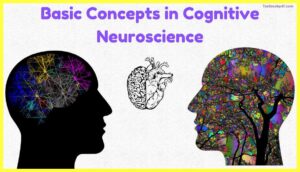Basic Concepts in Cognitive Neuroscience
The fundamental ideas of cognitive neuroscience and Basic Concepts in Cognitive Neuroscience are the subjects of today’s article. I’ll discuss the connection between the brain and behavior with you today. Here the focus is to brief the structure and function of Neurons and the basic neural organization. We will also learn about various parts of the brain and their organization, and how this organization governs human behavior. We shall discuss how the different brain parts and internal mental processes work. A influences the occurrence of mental states and mental processes.
In today’s article, we’ll discuss the many brain regions and how they relate to human cognitive functions. We’ll also look at the numerous approaches used to look into the connection between the brain and behavior. We are now attempting to determine how the aforementioned two can truly help to construct a theory of human cognition.
What is cognitive neuroscience?
Cognitive neuroscience may be defined as the study of physiological basics of cognition you might remember in the earlier classes we have been talking constantly about cognitive psychology being an abstract science and the entire frame of the cognitive cycle we resting on the fact that we do not need physical substrates to a rely upon while we are realizing about how mental functions exist and what is basically the architecture of the mind. In today’s article, we will try to actually connect that abstract architecture to a physical architecture that is your brain.
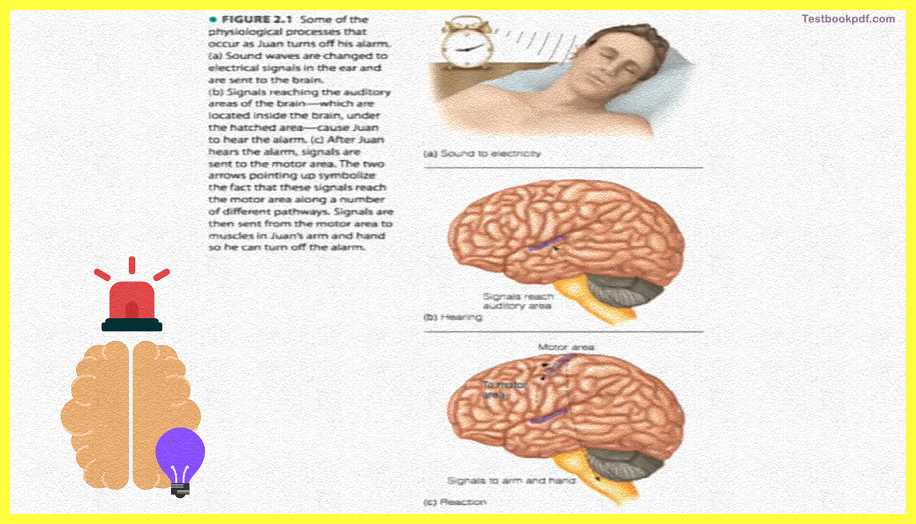
Just I will give an example of how your brain is involved in each and every activity you do. Let us take the case of this boy John who is actually a who is sleeping every day every morning one of the first things he does is switches off the alarm clock that go on right next to his head. Now what must be happening in the brain when the alarm goes off the first step that happens when the alarm goes off is that the sound reaches the ears and these sound waves are then converted into a kind of an electrical signal from the ear which is then communicated to the brain.
The auditory areas in the brain actually help John really hear this sound then these signals then a decision is taken whether to stop the alarm clock or to rise up, because it is already morning time that signal or that decision has to be communicated towards the motor areas of the brain which instruct John’s hand to actually go there and to stop the alarm Now this is a very simplest examples of a particular behavior that you might engage in.
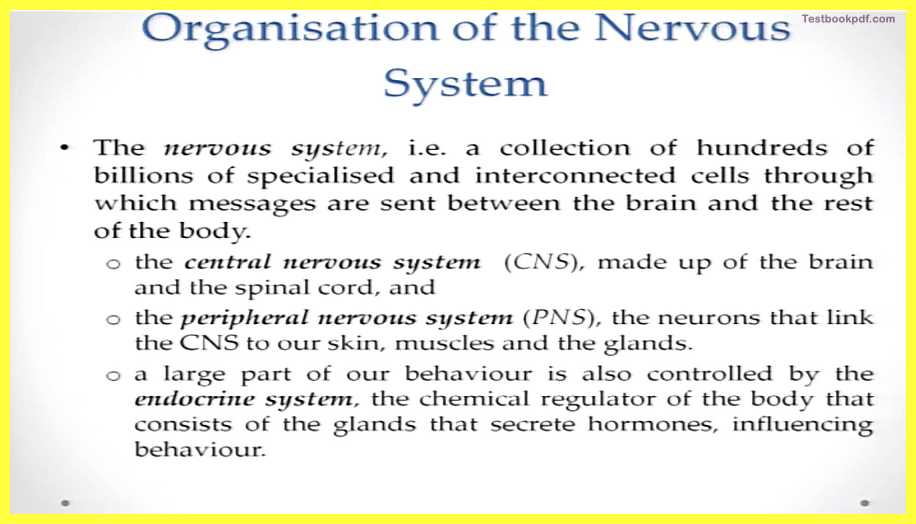
But you should give an idea about the simplest and most complex task that we do resembles the most complex mental function that we can think about or the brain is constantly working, there is an entire system of communication and structures in the brain that actually collaborate to bring about any kind of that the human being involves in.
Let us begin with the organization of the nervous system. The nervous system basically is a collection of hundreds of billions of specialized and interconnected cells through which the messages are sent from the brain to the rest of the body and vice versa. The most basic of the primary parts of this nervous system is the central nervous system which consists of the brain and the spinal cord, and the peripheral nervous system which links the central nervous system to our skin muscles, and other glands in the body.

A large part of our behavior is also controlled by the endocrine system which is basically the chemical regulator of the body and consists of glands that secrete a variety of new hormones and others that influence our behavior.
So, here is a figure you actually have to look at it so here you will see the central nervous system which is concessive of the brain in this spinal cord, and the peripheral nervous system which consists mainly of these peripheral nerves.
Now coming to neurons, the neurons basically are considered to be the basic building blocks of the brain this theory was basically first proposed by Raymond Cajal who discovered that the individual units called neurons were the basic building blocks of the brain and that basically form the centerpiece of doctrine called the neuron doctrine. The neuron doctrine actually said these individual cells transmit the signals in the nervous system and that these cells are not continuous with other cells as was earlier proposed by the nerve net theory.
Signals
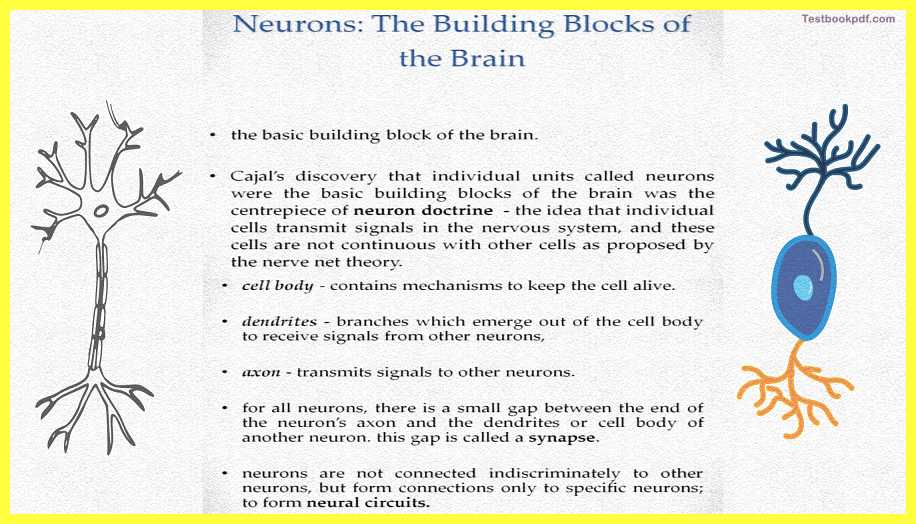
So we are talking about these neurons as single and independent units which connect to each other to relay particular kinds of signals which actually happen while the brain is processing a variety of stimuli, a variety of information that is incoming from the environment. Here you can see the figure of a neuron you will see that at the left-most there is this cell body which is basically where the nucleus of the neuron or the cell lines and you will see there are these projections from the cell body which are called dendrites the job of them is basically to receive messages from other neurons or other cells then you will see this long fiber emanating from the cell body which is basically the axons. Axon basically does the task of transmitting signals from the cell body towards other cells you will see at the end of this axon there are these structures called terminal which actually form the connections between a particular neuron and dendrites of another neuron to which have to be connected.
We will talk about this in more detail as you go ahead just to briefly remain the cell body basically has the mechanisms to the cell alive. Dendrites are the branches that emerge out of the cell body. Axon transmits signals to other neurons and a very important part of how the neurons communicate is the fact that for all neurons there is a gap between the end of the axon of a particular neuron and the dendrites are the cell body of another neuron. This gap is called synapse this is a very significant part of how the neurons communicate with each other. We will elaborate on how this communication happens as we go ahead. Now these neurons are also not connected indiscriminately to another is not like every neuron is connected to every other neuron it is basically that these neurons are connected in form of special networks called neural circuits or neural networks which are generally allocated towards the particular kinds of a specific function.
How does the communication happen between these neurons?
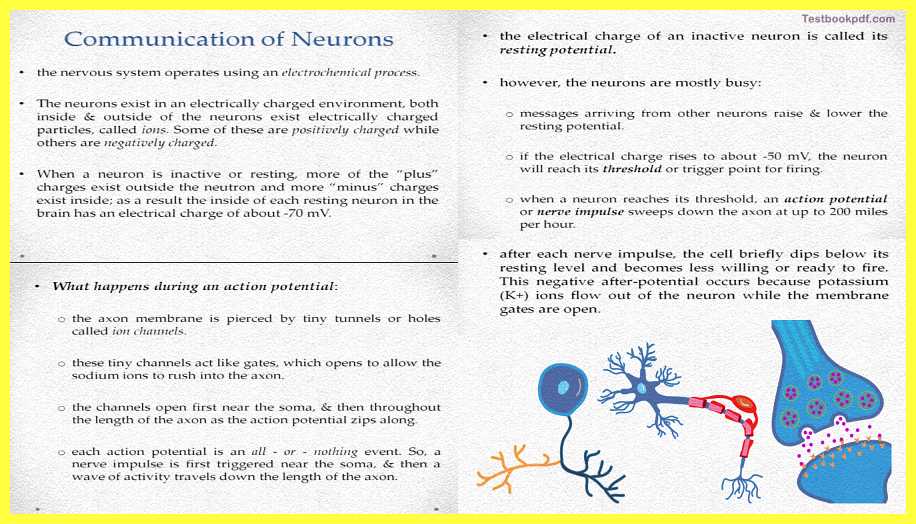
The nervous system generally operates using an electrochemical process, these neurons exist in an electrically charged environment and both inside and outside of the neurons exist these charged particles called ions. Now some of these particles could be positively charged while others could be negatively charged, when a neuron is inactive or resting more of the plus charge is more of these positively charged ions are outside of the neuron while a lot of these negative charge particles are existing inside of the neuron.
As a result of this difference of charged the resting potential are the basic charge of a neuron in a resting state is generally around -70mV this one is called the resting potential of the neuron.
However, it is really that the neurons are in the resting state they are generally busy because they are so much information that the brain continuously receives from outside the environment.
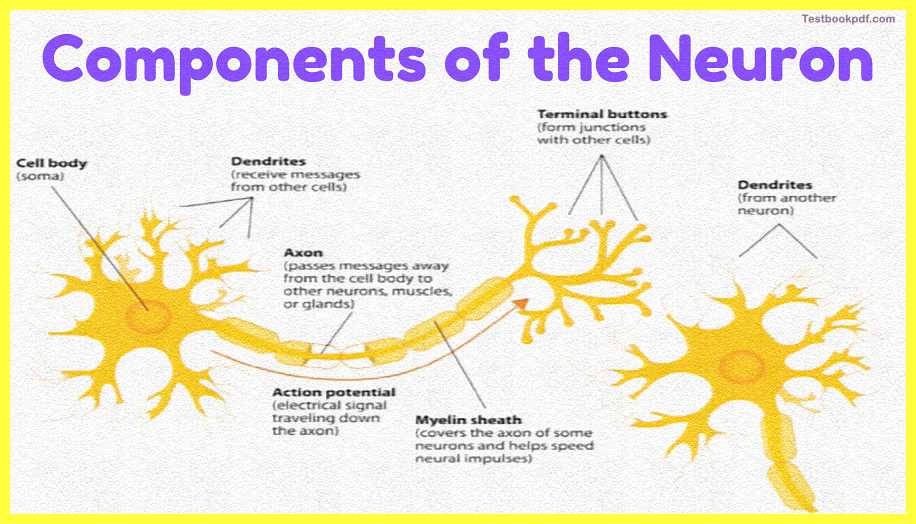
Now for this basically how the brain really starts processing or starts taking in this information and relaying it to the other areas of the brain is done by the neurons. So messages keep on arriving from other neurons that actually influence the behavior of the neuron impulsion.
So the behavior could be like this resting position it could get higher up or it could get lower down. Now if the electrically charged of this neuron impulsion let us say rises to about -50mV the neuron will reach something called its threshold. The threshold is basically the trigger point of the neuron for firing. Once the neuron reaches its threshold it also generates the signal from its cell which is called the nerve impulse or the action potential.
Once the threshold is reached the neuron actually fires this action potential which actually slips down from the cell body towards the axons and towards the terminal at speeds of around up to 200 miles per hour.
What is happening during an action potential and how this signal is generated actually?
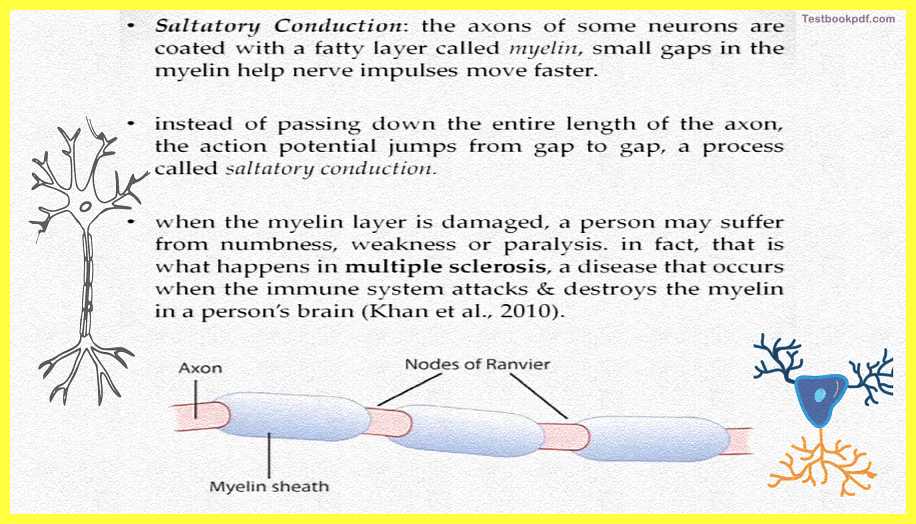
The axon membrane basically is pierced by tiny tunnels or holes called ion channels these channels act like gates that open to allow the sodium ions to rush inside or into the axon. These channels open first near the soma and then throughout the length of the axon as the action potential zips along.
So this happens in the soma or which is the cell body and then it starts opening consecutively along the length of the neuron which is towards the axon and this is how basically this action potential is zipping along. Each action potential is an or a nothing event. So a nerve impulse is first triggered near the soma that is the cell body, and then the wave of activity travels down the length of the axon as I already said.
This is the diagram of how the action potential might be generated in a neuron you can see that there is a gap between the terminal button of one neuron and the dendrites of the other neurons. When the action potential is fired there is an exchange of neuron transmitters also between these two sets of neurons which we will elaborate in this way.
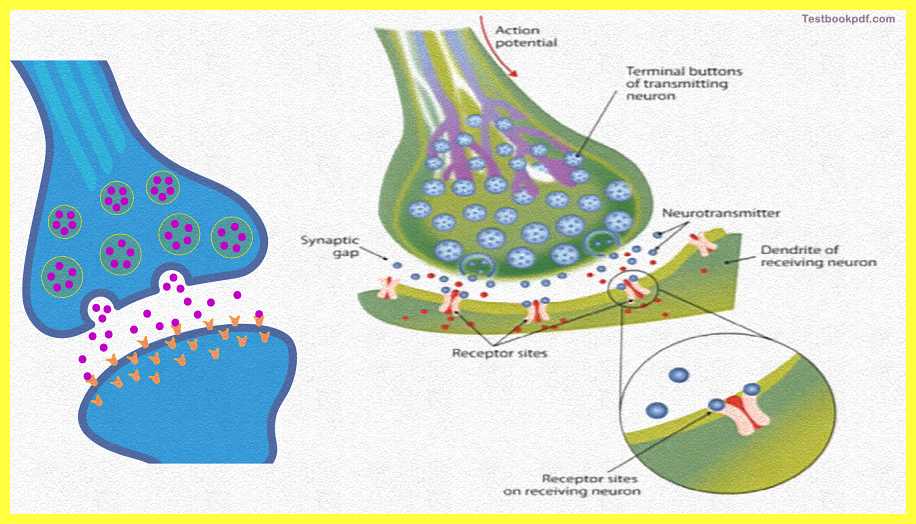
After each nerve impulse, the cell briefly dips below its resting level and then becomes less willing or ready to fire. This negative after potential occurs basically because potassium ions flow out of the neuron while the membrane gates are open. So this period basically is called the refractory period when the neuron is not ready to fire. And phenomenon during are about the communication between the neurons is the phenomenon of salutatory conduction. The salutatory conduction basically has to do with the myelin sheets.
Myelin Sheets
If you remember the figure of the neuron that I just showed you can see that there is this coving over the fiber which was the axon and this covering is basically a layer of fatty substance which is called myelin sheets. Now basically this covers some of the axons and it has some gaps in it this basically ensures that the action potential travels rather quickly throughout the length of this axon.
Now instead of passing down this entire length of the axon, the action potential basically jumps from gap to gap you know there is this gap between how the myelin sheet is actually throughout the axons.
So if you see here the myelin sheet is actually covering this entire length of the axon fiber but here are certain gaps these gaps are basically called the nodes of the run weir.
Now, so basically instead of passing down through the entire length of the axon the action potential actually jumps from gap to gap.
So for example they will be a channel opening at one gap and then not throughout the length of the myelin sheet but they will again open up in the other gap this is how you can say that the action potential is jumping from one gap to the other gap throughout the length of the axon.
Neurotransmitters
When an action potential finally reaches the tip of the axon terminals neurotransmitters are released into the synaptic gap which we just saw these neurotransmitters basically are chemicals that alter the activity in neurons. Neurotransmitters basically travel across the synaptic space between the terminal button of one neuron and dendrites of another neuron where they bind to these basically receptive sites at the neighboring neuron. Different terminals release different kinds of neurotransmitters and different dendrites are particularly sensitive to different kinds of neurotransmitters. The dendrites will admit only the neurotransmitters if the other right shape to fit in the receptor is on the receiving neuron, the mechanism basically resembles that of a lock and key.
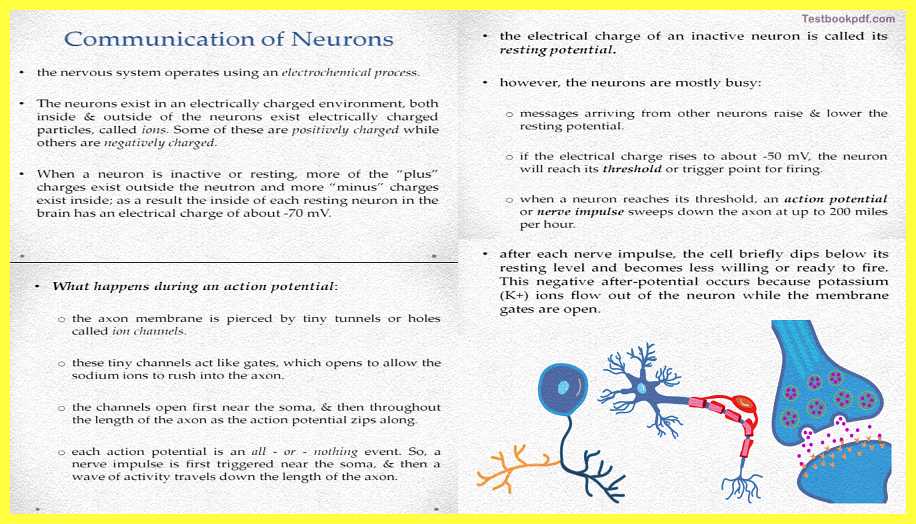
So during the communication happening between these two neurons when the action potential is fired particular neurotransmitters are released, but only those neurotransmitters will be received by the neighboring neuron for which there is an exact match between the kind of the neurotransmitter release and the kind of the receiver or receptor sites that are existing on the neighboring neuron this is how lock and key really function.
Here you can see again the same diagram wherein you can see that the neurotransmitters have been released from the terminal buttons of one of the neurons and there are these receptors sites in the neighboring neuron which is receiving these neurotransmitters. Now when these neurotransmitters basically are accepted by the receptors sites on the receiving neurons, their effects might be either excitatory or inhibitory. Now, what does excitatory or inhibitory mean if the neuron is able to accept more than one neurotransmitter, then it will be influenced by the excitatory or inhibitory process of each kind. Now again coming here to what excitatory or inhibitory means excitatory action basically means that it will excite the neighboring neuron to fire an action potential, inhibitory interaction means that the received neurotransmitter will inhibit the neuron which has received it will inhibit it from firing and action potential.
So these are the two kinds of relationships that are possible. When the neuron basically receives more than one kind of neurotransmitter, it basically functions on the summation of the number of excitatory or inhibitory influences.
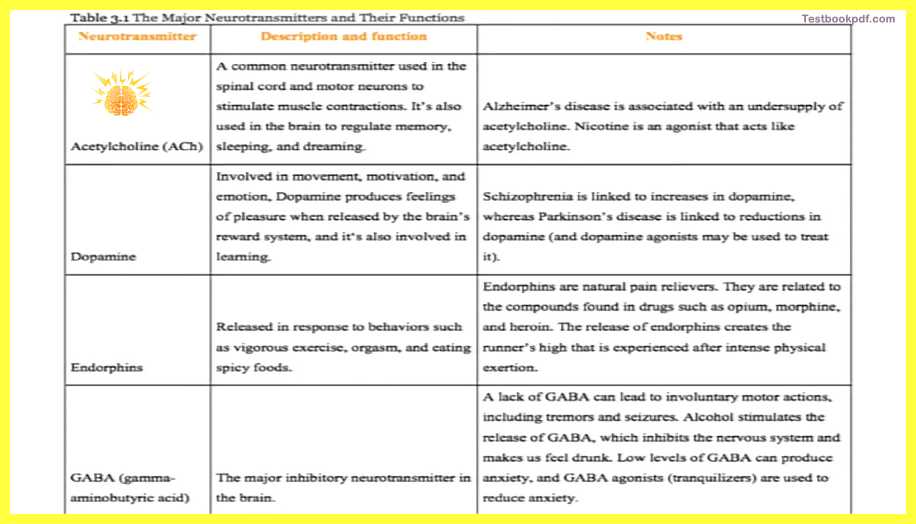
Let us discuss a few neurotransmitters and how they actually affect human behavior. So one of the very common neurotransmitters you will hear about is dopamine. Dopamine basically is involved in movement, motivation, and emotion. So when dopamine is released it basically produces feelings of pleasure and it is also involved in learning just as a side note dopamine basically links to schizophrenia patients basically where people experience increases in the level of dopamine release.
Parkinson’s disease
Also, Parkinson’s disease is linked to the reduction in the levels of dopamine which kind of lace on to problems in particular kinds of movements. Another example could be acetylcholine, acetylcholine basically a common neurotransmitter used in the spinal cord and motto neurons to stimulate muscle contractions. It is also used in the brain to regulate memory, sleeping, and dreaming.
Alzheimer’s disease
Alzheimer’s disease is linked to the undersupply of acetylcholine also nicotine is basically supposed to be an agonist that acts like acetylcholine. So basically Alzheimer’s is something that can replace neurotransmitters in the kind of function. Endorphins are another class of neurotransmitters that are released and responded to such as vigorous exercise and eating spicy foods.
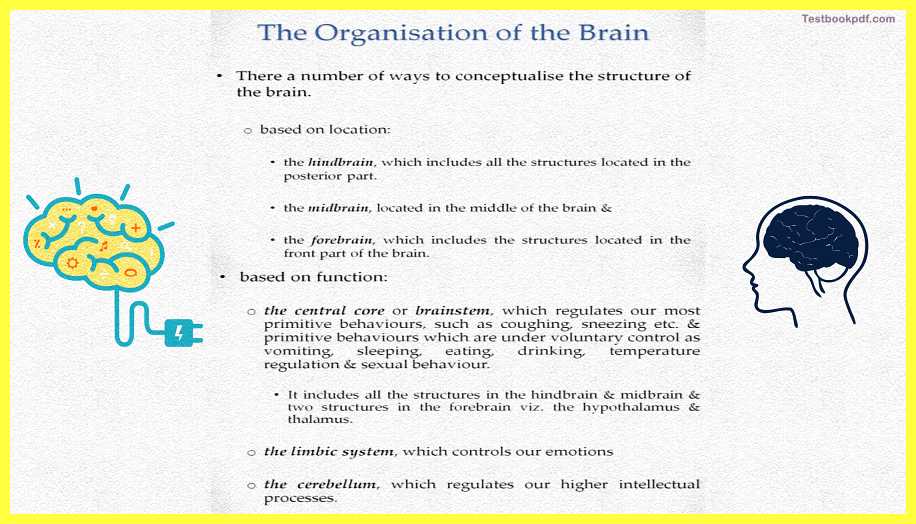
So Endorphins basically a natural pain reliever they are related to the compounds found in drugs such as opiates, morphine, heroin, etc. The release of endorphins basically creates a kind of a high runner or somewhere say for example, that people experience sometimes after heavy exercise. This was about how communication happens between neurons. Let us now move toward how the brain is structurally organized.
Now if you look at the brain there are a variety of ways in which you can imagine that the brain could be organized. One of the first ways could be based on the location of the brain.
Now if you actually look at the brain it could be very simply that there could be one part of the brain basically which includes all the structures in the posterior part which is your hindbrain, there could be something in the middle which is your midbrain, and there could be something in the front which is your forebrain. So, the hindbrain basically includes all the structures which are located in the posterior part of the brain.
The midbrain basically includes all the structure that is located in the middle part of the brain, and the forebrain is basically all the structures that are considered in the front part of the, front of the brain.
Now another way of imagining the organization of the brain could be based on function. So this central core of the brain stem could be which regulates our most primitive behaviors such as coughing, sneezing, and other primitive behaviors which are under voluntary control such as vomiting, sleeping, eating, drinking, etc.
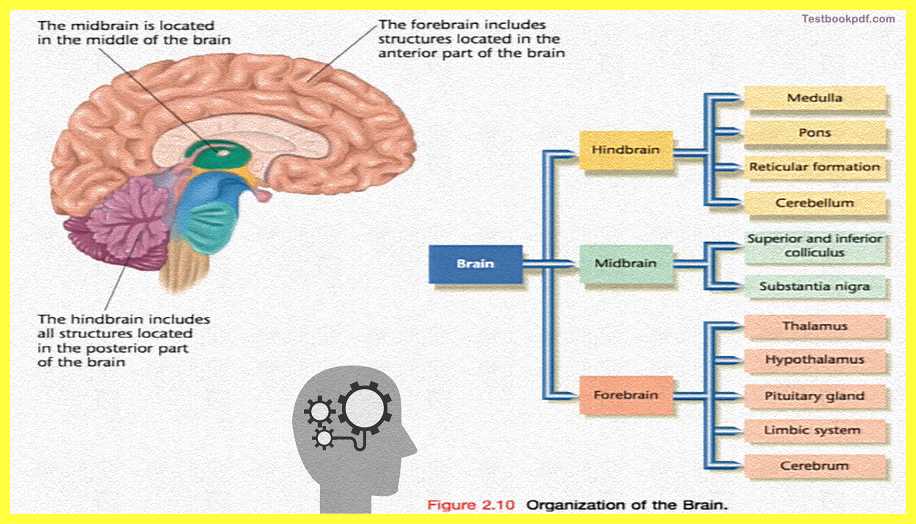
This basically includes all the structures in the hindbrain and the midbrain and the true structures in the forebrain which are the hypothalamus and the thalamus. Another structure important on the basis of function is the limbic system. The limbic system basically includes is the system of structures of the brain that basically have to do with controlling our emotions. Another important part is the basis of function in the cerebellum. The cerebellum is basically the part that regulates our higher intelligential processes.
You can see that there is a midbrain located in the middle of the brain, the forebrain structures in the anterior or the front part of the brain, and the hindbrain structures are right at the backside brain. You can see the structures which are part of these three components so medulla.
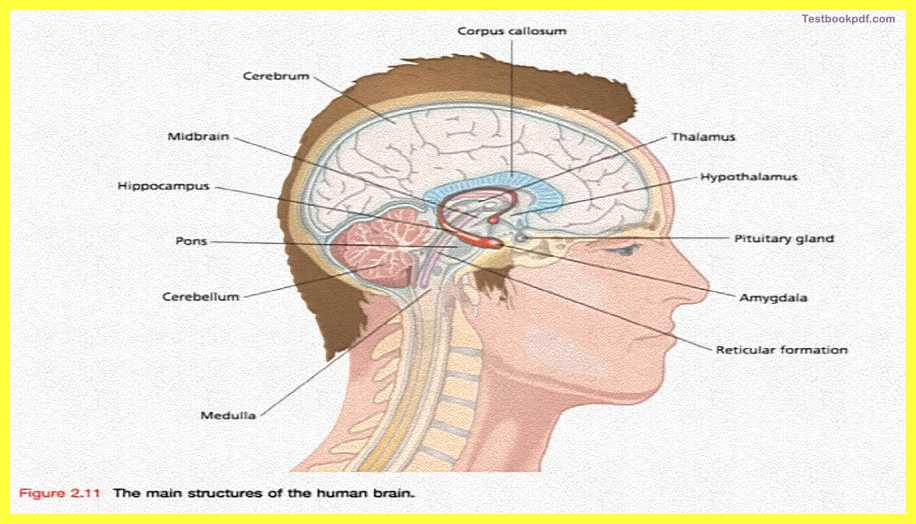
The medulla forms the reticular formation, and the cerebellum form part of what is called the hindbrain, the superior and inferior colliculus and substantia nigra form part of what is called the midbrain and thalamus, hypothalamus, pituitary gland, and the limbic system, and the cerebrum basically form part of what is called your forebrain.
You can see all of these parts in this particular you can see that there is thalamus, hypothalamus, and pituitary gland in the middle you can see what the brain is you can also see the cerebrum you can see the cerebellum and you can see medulla, and reticular formation.
Parts of the Brain
Now let us talk in a bit more detail about these parts of the brain. The hindbrain basically sits on the top of the spinal cord it is crucial for most basic life functions. It has these parts the medulla which is the first slight enlargement of the spinal cord as it is just entering the skull, it is a narrow structure that basically controls breathing and some reflexes that help in maintaining an upright posture.
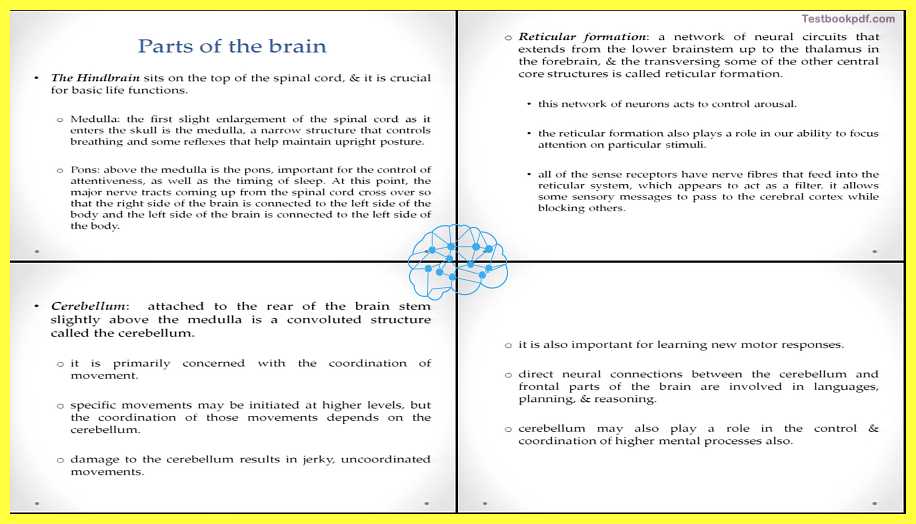
Pons and the medulla
The Pons are above the medulla and they are important for the control of things like attentiveness as well as the timing of sleep. Now at this point the major nerve tracts coming up from the spinal cord cross over so that the right side of the brain is connected to the left side of the body and the left side of the brain is connected to the right side of the body.
Here you can see the Pons and the medulla. Talking about reticular formation, reticular formation basically is a network of neural circuits that extends from the lower brainstem right up to the thalamus in the forebrain and transversing some of the other central core structures. This type of neuron basically acts to control aerosol. The reticular formation also places a role in our ability to focus attention on particular kinds of stimuli.

All of the sense receptors have nerve fibers that feed into the reticular system which appears to act as a filter. The reticular formation also allows some sensory messages to pass through the cerebral cortex while blocking some others.
Cerebellum
Here you can see that the reticular formations can be seen on the cerebellum. The cerebellum basically is attached to the rear of the brain stem which is slightly above the medulla, and it is basically a convoluted structure. It is primarily concerned with the coordination of movement-specific movements that may be initiated at higher levels, but the coordination of these movements basically depends on this structure called the cerebellum. Damage to the cerebellum sometimes results in jerky uncoordinated movements you know movements are, for example, somebody is drunk and cannot stand properly and those kinds of things. You can see that the cerebellum is right at the back of the brain.
The cerebellum is also important for learning new motor responses, every time you actually planning to learn a new more, for example, cycling, swimming, you know particular kinds of physical sports, the cerebellum is an important area which helps you learn those there are direct neural connections between the cerebellum and the frontal parts of the brain which also helps to have two basically helps your ability of learning languages, the ability of planning and reasoning you know future events.
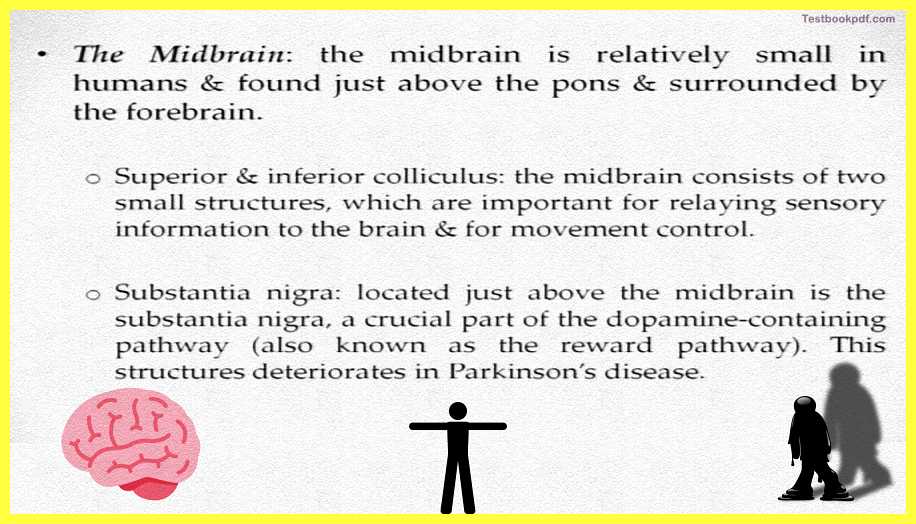
The cerebellum also has been found to play role in controlling in coordinating higher mental processes like thinking and imagining those kinds of things coming to the midbrain.
Midbrain
The midbrain is a relatively small area in humans and it is found just above the Pons and is surrendered by the forebrain. There are these parts the superior and inferior colliculi, the basic two small structures which are important for relaying sensory information to the brain and for movement controls.
So these are the areas which are receiving all the information from the spinal cord onwards and then we relay it to the other parts of the brain to get processed further. Another part that forms the part of the midbrain is the substantia nigra. The substantia nigra is basically just located above the midbrain and this is the crucial part of the dopamine-containing pathway also known as the reward pathway. So this is the pathway that makes you know people feel good if you remember on the earlier slides I talked about dopamine as being the pleasure neurotransmitter this structure is basically in people having Parkinson’s disease.
Forebrain
Here you can see the thalamus coming to the forebrain. In humans, the forebrain is basically relatively large and it covers the midbrain and parts of the hindbrain. A large part of it basically the cerebrum is also called as cerebral cortex basically a word borrowed from the Latin word for ‘bark’. The other structures of the forebrain which is the thalamus, the hypothalamus, and the areas comprising the limbic system. They are just found beneath the cerebrum and are referred to as sub-cortical structures.
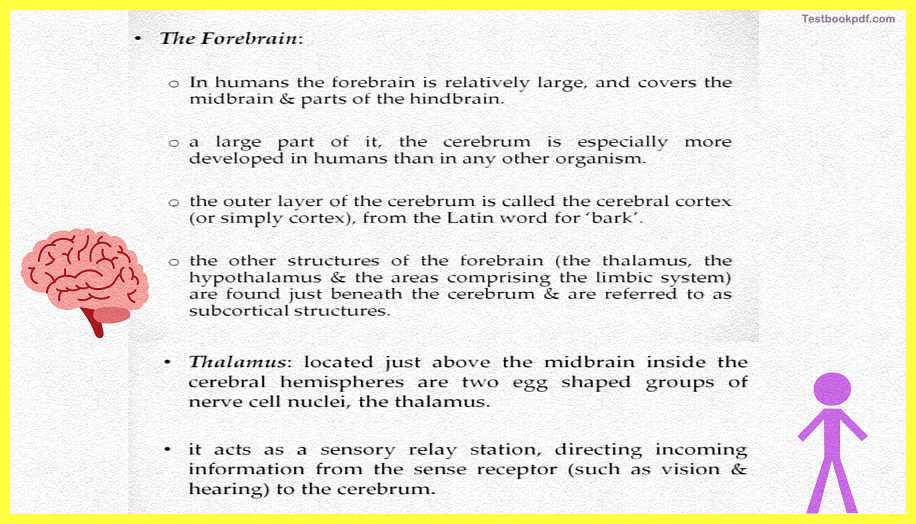
Thalamus basically is just located above the midbrain inside of the cerebral hemispheres and basically, these are two egg-shaped groups of nerve cells. The thalami basically act like sensory relay stations which are detecting incoming information from the sense receptors the five senses vision, hearing, taste, touch, etc., and direct these to the cerebrum where these are processed.
The hypothalamus basically is a much smallest structure located just below the thalamus. It is one of the structures it is actually main structures involved in regulating, eating, drinking, sleeping, and sexual behavior the hypothalamus is also involved in maintaining something called homeostasis which is basically how the system controls the autonomic nervous system.
Homeostasis is basically a term that refers to the level of functioning that is characteristic of a healthy and normal individual let us say for example there is elevated blood pressure or the body has less nutrition these kinds of things disturb homeostasis and the hypothalamus basically directs the brain to take steps to restore this balance or restore the homeostasis.
Hypothalamus and Thalamus
You can see the hypothalamus and thalamus in this figure. Now say for example when an organism is under stress, homeostasis is disturbed and then the processes are certain motion to correct this lack of equilibrium say for example if we are too warm in the summer season if we say for example if it is too cold, you know steps will be taken to actually restore the balance. Say for example, if it is too warm the body starts sweating so that the temperature of the body you know comes down, or say for example if it is too cold the body starts shivering and some kind of movement is created that also generates heat and the body from getting too cold.
Both these processes basically you know intentioned to restore the normal temperature and are controlled by the hypothalamus. The hypothalamus also plays an important role in the sensation of emotions and in responding to stressful situations. Why do I say this, mild electrical stimulation of certain areas in the hypothalamus has been found to produce feelings of pleasure, and stimulation of certain adjacent regions in the hypothalamus has also been found to produce unpleasant sensations.
So this is one of the ways shreds of evidence would actually tell you that the hypothalamus is actually involved in this sensing of emotions. The pituitary gland is part of the limbic system it is also the most important part of the glands called the endocrine system. The hypothalamus basically controls the endocrine system and thus it also controls the production of various kinds of hormones.
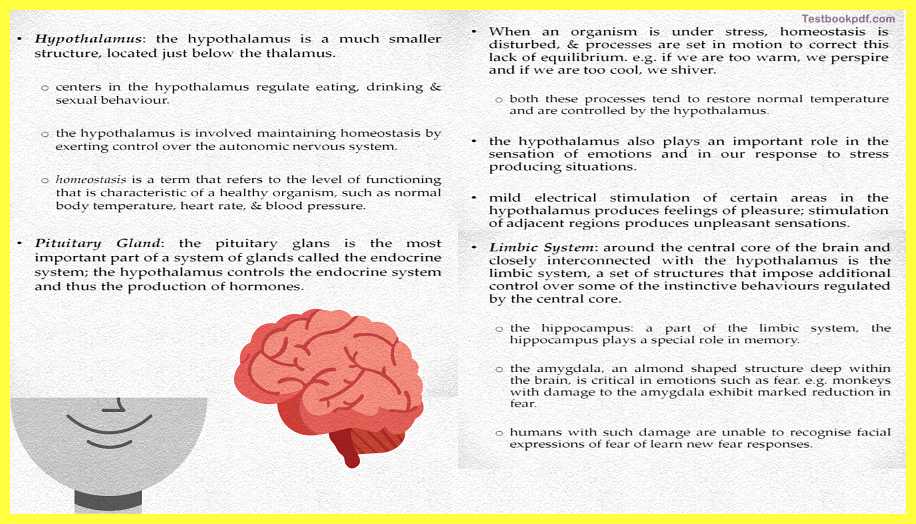
Coming to the limbic system, the limbic system basically is the area around the central core of the brain and these are very closely interconnected with the hypothalamus okay. These are the set of structures that imposes additional control over some of the instinctive behavior regulated by the central core. The hippocampus is basically a part of the limbic system that plays a special role in memory.
The amygdala is an almond-shaped structure deep within the brain it is very critical in experiencing motion such as fear, humans will damage to you know the amygdala are unable to recognize facial expressions of fear, and also they have this inability to learn new fear responses.
Here you can see the amygdala. Now to sum up today’s article we talked about the basic neural organization of the brain that governs human behavior. We also talked about the structure and the functions of the neurons, and finally, we talked about the organizational principles of the brain. In the next class, we will talk about the cerebral cortex. Thank you.
Read also:
Modularity and Cognitive Neuropsychology
Approaches Towards Cognitive Psychology
Click here for Complete Psychology Teaching Study Material in Hindi – Lets Learn Squad
